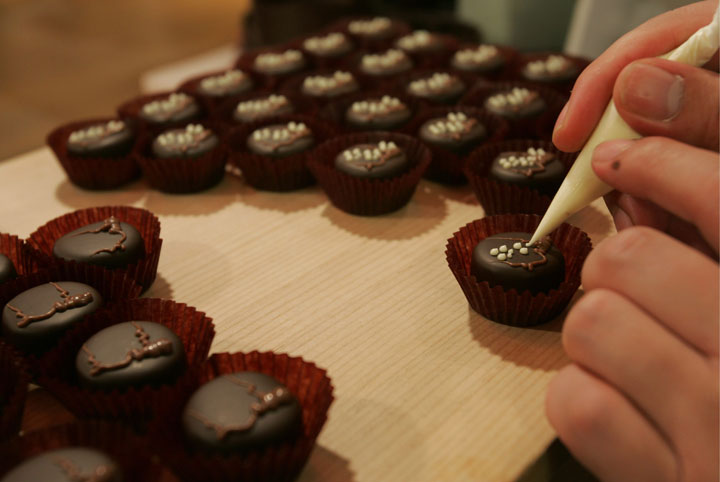TORONTO – Two major chocolate manufacturers claim that the world is at risk of facing a chocolate shortage.

Bloomberg reported that Mars Inc. and Barry Callebaut AG (BARN), the world’s largest chocolate maker, predict that by 2030, the global demand for cocoa will outpace supply.
“Because of disease, drought, rapacious new markets and the displacement of cacao by more-productive crops such as corn and rubber, demand is expected to outstrip supply by an additional 1 million tons every decade for the foreseeable future,” said the report.
READ MORE: UN climate panel says hotter world means less food, higher costs
Similar predictions have been made in previous years. In 2010, John Mason, the executive director and founder of the Ghana-based Nature Conservation Research Council said that in 20 years, chocolate will be like caviar as “it will become so rare and so expensive that the average Joe just won’t be able to afford it.”
Chocolate isn’t the only luxury food item to reportedly face a shortage in recent years.
Wine
In October 2013, a single report from the Australian research division of the investment bank Morgan Stanley said the latest figures indicated a shortfall of 300 million cases of wine in 2012.
The report was widely communicated by global media and caused frenzy among those of us who enjoy a nice glass of Merlot, Pinot Grigio or Shiraz. A few days after the release of the initial report, Reuters finance blogger Felix Salmon noticed the company only used data up to 2012, despite the fact that information for the 2013 was available and showed that wine supplies were bouncing back.
Salmon also noticed that the report “was promoting an Australian wine company as a top stock pick to buy.”
“What you do in investment banking – you come up with a thesis and argue it as strongly as you can,” he said. “The whole idea is that you make a headline, and if you can say a big attention-grabbing headline like, ‘There’s a global wine shortage’ then that’s going to get you lots of press.”
Almonds
According to the U.S. Department of Agriculture, almonds are now California’s largest agricultural export and were valued at nearly $4 billion in 2011.
This year, California struggled with one of its worst droughts ever and the price of almonds was at an estimated nine-year high. The state’s farmers, estimated to grow around 80 per cent of the world’s almonds, have been accused of pumping groundwater from underground reserves in hopes of nourishing their almond trees, orchards and vineyards.
According to a recent report from the University of California, the task has resulted in farmers spending an extra $500 million in pumping extra water to cope with the drought, while the total cost to the state reached $2.2 billion.
Olives
In September, trade magazine The Grocer reported that scorching summer conditions in Spain, the world’s No. 1 producer of olive oil, hampered the country’s olive crop so severely that olive oil bottlers reported they were paying 20 to 40 per cent more for olives than they were in May.
“Above-average dry and warm weather throughout the Mediterranean olive-growing belt in May and June adversely affected olive trees during the blooming period,” said a spokesperson for food industry analyst Mintec in an interview with The Telegraph. “This is on top of the stress the record output seen in 2013/14 had put on the Spanish trees.”
Two years ago, a heatwave wiped out 80 per of the crops in Spain and pushed the prices of olive oil products up as much as 30 per cent, causing the price of olive oil in shops to rise by as much 13 per cent in the last quarter of 2012.
Goat cheese
In January 2014, restaurants in the UK and Europe reported a goat cheese shortage as producers reported they were experiencing difficulty accessing supplies of goat milk. Experts said the growing demand of goat’s cheese meant more producers were getting into the sector “but were finding it hard to get milk as established producers have the supply sewn up.”
Production this year was down across Europe as many goat farmers quit the industry due to low prices and many have yet to recover from a 2010 cull of goats that occurred in order to prevent the spread of Q fever—an infectious disease that spread from animals like cattle, sheep and goats to humans.
While the shortage only reportedly lasted a few months, a consumer group in the UK found fake goats’ cheese in supermarkets following the shortage. According to the watchdog, nine out of the 76 samples tested across the UK were positive for sheep’s milk.






Comments